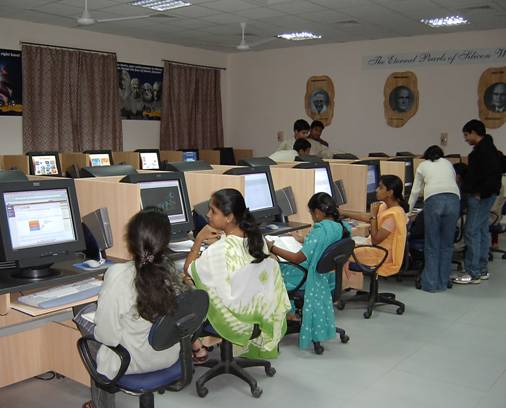Tucked
away on the second floor of what old timers speak of
as the M-block is the Oyster Lab. With thirty-six
terminals, each with a sleek 17” monitor, some of
the most advanced software around, surely the label
of state-of-the-art is warranted.The walls are
adorned with portraits of pioneers in the
development of semiconductor devices.
The walls also have posters exhorting the students
to “Be the next Silicon Revolutionary!” All of these
point the students towards the ultimate aim: of
producing a microchip developed completely in house,
at BITS.
Inception and Growth
The lab is
a product of a Rs. 200 crore initiative by BITS and
its alumni to make BITS, Pilani the most
technologically advanced institute in India. The
first of its kind in the country, the lab aims to
promote research in silicon technology and chip
development. The OLAB will also have an extension at
Bangalore to allow the students at BITS to work
closely with industry. Partners in the industry will
include OpenSilicon, Magma and Broadcom. The
Bangalore lab is still in the planning stages and a
site will be selected soon.
Course Tools
The OLAB
is being utilized for courses like Analog and
Digital VLSI Design (ADVD) as well as higher degree
courses like VLSI architecture and Analog IC design.
Plenty of projects which require use of the the
lab’s tools have been allotted this semester. The
facility is also used by some professors and Ph.D.
students for research.
Everyone
using the OLAB is learning together, and professors
and students often explore the nuances of the
various tools at the same time. Some students who
have used similar design tools at their PS II
stations contribute as well. Demo sessions, in which
the usage of the tools is discussed, are held on a
regular basis. The students can also interact with
professors as well as people from the industry on
the forum that has been set up at
http://oysterslab.bits-pilani.ac.in.
The tools
available in the OLab are the same tools that are
being used for VLSI chip design in the industry at
present. Having experience of this kind at the
under-graduate level will no doubt give BITSians an
extra edge.
Future Prospects
The OLAB
still has vast potential to grow. At present, more
courses are being structured to include OLAB
components, while the projects allotted are
increasing in complexity. However, there is a need
for more input from the industry. If more
challenging projects are offered by the industry,
the students will soon gain better skills.
The OLAB
is also closely connected with the Technology
Business Incubator at BITS. The faculty extends an
open invitation to alumni to return and make the
most of this cutting-edge technology to aid their
own start-ups. The faculty hopes that the OLAB and
other facilities may aid any entrepreneurial
alumnus.

